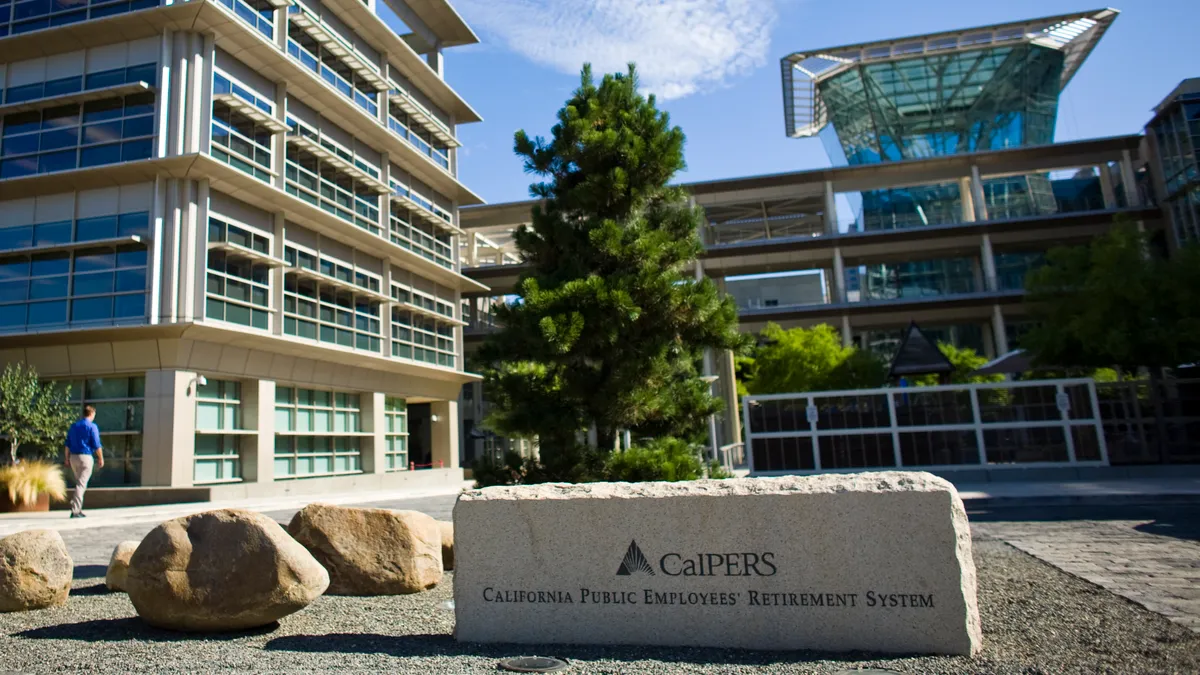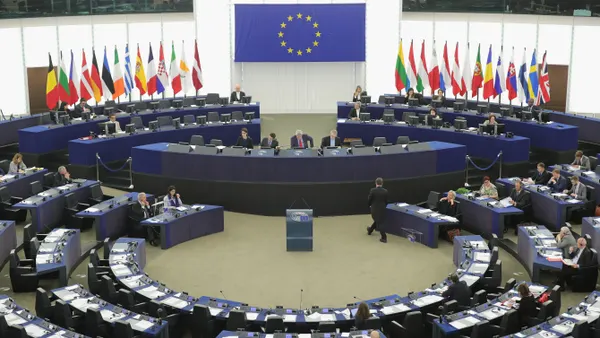Dive Brief:
- The California Public Employees’ Retirement System is planning on directing approximately $25 billion into private market climate solutions and is contemplating investments in private equity, real estate and infrastructure markets, according to a report from the Financial Times.
- The largest pension fund in the country will allocate funds where it “sees the best opportunity” for climate solution investments, James Scullary from CalPERS’ Office of Public Affairs told ESG Dive over email. Scullary said the fund is exploring markets in North America, Europe, Asia or “elsewhere” to deploy the capital over the next six years.
- The allocation is part of the fund’s strategy to commit $100 billion toward climate solutions by 2030. CalPERS announced in November it was aiming to devote an additional $53 billion in sustainable investments by the end of the decade, which would more than double the amount of its low-carbon assets, worth close to $47 billion at the time of announcement.
Dive Insight:
Though Scullary confirmed CalPERS Managing Investment Director for Sustainable Investments Peter Cashion was directing around $25 billion into private markets, Scullary said the pension system would distribute funds where it saw the best prospects, “across all asset classes — public and private.”
The fund did not reveal specifics about where it was allocating the capital, but Scullary said it would disclose details about some of the climate solution investments later in the year.
Cashion told the Financial Times private market assets have “very evident climate investment opportunities,” providing insight into how CalPERS plans on spending the additional $53 billion it committed to growing its low-carbon assets portfolio last year.
The California pension system, which has over $483 billion in assets under management, also stated in its November policy proposal it would increase “portfolio resilience” by integrating ESG and climate risk analysis into its investment strategy and divest holdings from “companies without credible net-zero plans” as they pose a fiduciary risk. The proposal also said CalPERS would establish clear accountability for companies when it came to reducing their carbon footprint and would compile an annual progress report evaluating the fund’s sustainable investment strategy beginning this November.
The updated sustainable investments strategy also aims to accelerate the fund’s goal of reaching net-zero by 2050 by reducing its portfolio’s emissions intensity and investing in renewable energy and carbon capture technologies.










